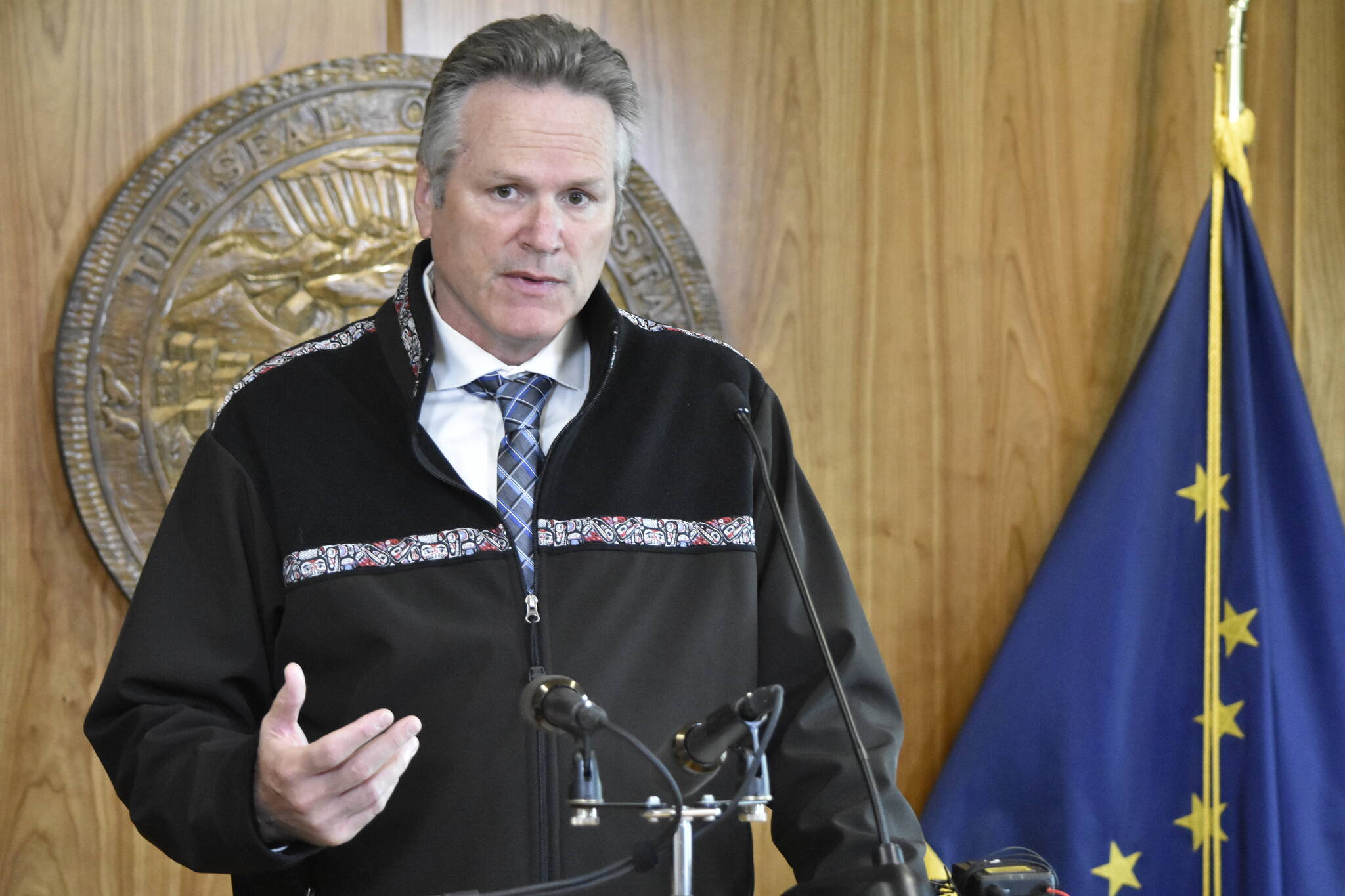“The legislature shall provide for the utilization, development, and conservation of all natural resources belonging to the State, including land and water, for the maximum benefit of its people.” — Article 8, Section 2 of the Alaska Constitution
For a Sustainability Report, the governor’s new 32-page so-called ESG (Environment, Social, Governance) pitch talks a lot about developing natural resources for the maximum benefit of its people, but manages to say nothing about when to conserve our natural resources for Alaskans’ benefit.
Reading the report, you might not realize that public comment periods for Alaska Department of Natural Resources are few and far between, and the periods you do get are painfully brief. The governor forgot to mention the state is, at this very moment, breaking its own rules on comment periods to rush through logging and seismic testing within feet of precious king salmon habitat in the Chilkat watershed for a mine most residents don’t want upstream from their homes — all without any public meeting or engagement.
Maybe the governor forgot to tell his ESG consultants about the Whale Pass timber sale, which, despite practically unanimous local opposition, the state Division of Forestry somehow managed to determine was “in the best interests of the state.” You might disagree with that finding if you had to watch the trees being cut down a mere 100 feet uphill from your home. Alaska is a big state with a lot of land being developed. It’s easy for the governor to cherrypick the projects that make him look attractive to investors while leaving out the not-so-pretty.
[Dunleavy signs carbon ‘trees’ bill at sustainable energy conference]
The elephant in the room, that even this report couldn’t leave out, is climate change. The report manages to condense the litany of catastrophes — Typhoon Merbok, villages falling into the sea, unprecedented wildfires, buildings sinking into melting permafrost, collapsing salmon fisheries, threatened ways of life — into two sentences. In a functional government each of these would be receiving a report of their own from the governor. But these impacts can no longer be ignored and Alaskans won’t stand for them to be swept under the rug in order to greenwash the governor’s reputation or his favored projects.
The biggest of these is the Alaska natural gas pipeline boondoggle that has been kicked around by various governors for decades. The report reads as a thinly veiled ESG pitch for the AKLNG project and, if you believe in each of the report’s straw men, it might be persuasive. Luckily for us, the report itself contains enough grains of truth to provide all the information we need to unpack this deception.
The governor’s first straw men are the issues of air quality, energy costs and equity in Alaska. The governor may or may not care about those issues, but if he does the obvious solution would be to invest in enough renewable energy production to get Alaska 100% renewable by 2050 at the latest. As the renewables section of the report makes clear, Alaska has vast renewable energy resources and renewables are the only permanent solution to Alaska’s energy equity crisis and Fairbank’s air quality crisis. The AKLNG project would only chain another generation of Alaskans to the whims of global energy markets and we already know that is not where we want to be.
Second, the governor attempts to make AKLNG look good by comparing it to coal — but we all know that literally any source of energy looks good compared to coal. It’s like comparing yourself to David Eastman — the comparison would make any politician look good. Using the same EPA calculator the presumably expensive ESG consultants used, I can tell you (for free) that not building the AKLNG pipeline but developing renewable energy resources instead would save the world the equivalent of 20 coal fired power plants or 193 gas powered power plants. If the same resources were invested in sustainable energy instead of stranded in a fossil industry, it would be a real step — as a state and a planet — toward a truly sustainable future.
Perhaps the governor will consider that necessity in his next sustainability report. We’re waiting.
Matthew Jackson of Sitka is a climate organizer at Southeast Alaska Conservation Council and a member of the Alaska Climate Alliance. Columns, My Turns and Letters to the Editor represent the view of the author, not the view of the Juneau Empire. Have something to say? Here’s how to submit a My Turn or letter.

